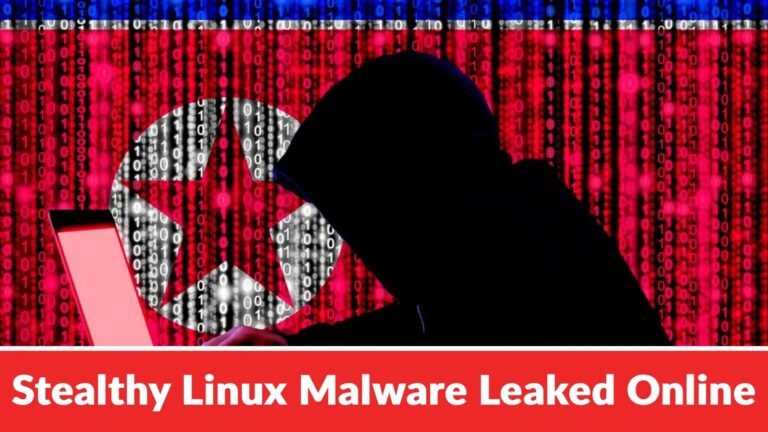Essential Insights
- A leak reveals advanced North Korean hacking tools, including a Linux stealth rootkit, targeting South Korean systems, exposing their operational tactics and capabilities.
- The rootkit leverages kernel modules and sophisticated concealment techniques, allowing persistent, undetectable backdoor access while evading traditional security measures.
- The malware’s design incorporates automatic reinjection, anti-forensic features, and encrypted command channels, complicating detection and response efforts.
- This breach underscores the urgent need for enhanced forensic monitoring and adaptive cybersecurity strategies to counter highly stealthy nation-state cyber threats.
The Issue
Recently, a major security breach revealed a cache of highly sophisticated hacking tools and detailed documentation, believed to be linked to North Korean cyber actors targeting South Korea’s government and private sectors. This leak, highlighted in Phrack Magazine, exposed advanced exploit strategies and a cutting-edge Linux rootkit designed for stealth, persistence, and evasion. The tools, which mimic tactics associated with North Korea’s notorious Kimsuky group, allow attackers to infiltrate networks undetected, steal sensitive digital certificates, and maintain long-term covert access. Security experts at Sandfly Security analyzed the leaked components, uncovering a highly concealed kernel module that can evade standard detection, delete traces, and reinject itself at every system restart, thereby enabling persistent and encrypted control over compromised systems. This breach underscores the growing threat of state-sponsored cyber espionage, emphasizing the urgent need for enhanced detection methods and forensic vigilance to counter such highly refined and persistent malicious software.
The leak’s detailed documentation reveals how these attackers leverage the khook library to embed rootkits deep within Linux kernels, enabling them to hide files, processes, and backdoors from routine monitoring tools. Once installed, the malware establishes a resilient presence through hidden scripts and modules that override basic system commands, making manual detection extremely challenging. Its backdoor component listens for encrypted “magic packets” to facilitate remote control, allowing attackers to execute commands, transfer files, and move laterally within networks—all while wiping traces of their activity. The revelation of this arsenal has alarmed cybersecurity professionals worldwide, illustrating the escalating sophistication of state-sponsored cyber threats and the importance of proactive, forensic-focused defense strategies to safeguard critical infrastructure in the Asia-Pacific region.
Risks Involved
The recent leak of North Korean-developed hacking tools, including a highly advanced Linux rootkit, exemplifies a profound escalation in cyber threats, with far-reaching implications for both national security and critical infrastructure. This breach exposes sophisticated espionage techniques targeting South Korean government and private sector networks, enabling persistent clandestine access through stealthy kernel modules that evade traditional detection. The rootkit’s ability to conceal itself, hide backdoors, and maintain resilience via encrypted command channels and automated reinjection illustrates a new era of state-sponsored cyber operational complexity. Such exposure not only democratizes advanced attack methodologies for malicious actors but also underscores an urgent need for adaptive, rigorous forensic detection and proactive cybersecurity measures—highlighting the pressing challenge of defending against highly covert, persistent threats orchestrated by nation-states that can undermine sovereignty and destabilize regional stability.
Possible Actions
Addressing the threat posed by North Korean hackers’ stealthy Linux malware leaking online underscores the critical need for quick and effective responses to prevent widespread damage. Timely remediation helps contain threats, minimizes data loss, and reinforces security defenses against ongoing cyber espionage activities.
Identify and Isolate
Promptly detect infected systems and disconnect them from the network to prevent malware from spreading further.
Analyze and Assess
Conduct thorough forensic analysis to understand the malware’s behavior, entry points, and impacted systems.
Update and Patch
Apply security patches and updates to vulnerable Linux systems to close exploits exploited by the malware.
Remove Malicious Code
Use specialized tools to carefully eradicate malware remnants from infected devices.
Enhance Defenses
Implement advanced intrusion detection systems (IDS), firewalls, and behavior-based monitoring to identify suspicious activity.
Notify and Collaborate
Report incidents to relevant cybersecurity authorities and collaborate with other organizations to share threat intelligence.
User Awareness
Educate staff about phishing risks, social engineering, and safe practices to reduce the likelihood of initial compromise.
Regular Backup
Maintain up-to-date backups of critical data to ensure business continuity if systems are compromised.
Stay Ahead in Cybersecurity
Explore career growth and education via Careers & Learning, or dive into Compliance essentials.
Access world-class cyber research and guidance from IEEE.
Disclaimer: The information provided may not always be accurate or up to date. Please do your own research, as the cybersecurity landscape evolves rapidly. Intended for secondary references purposes only.
Cyberattacks-V1

